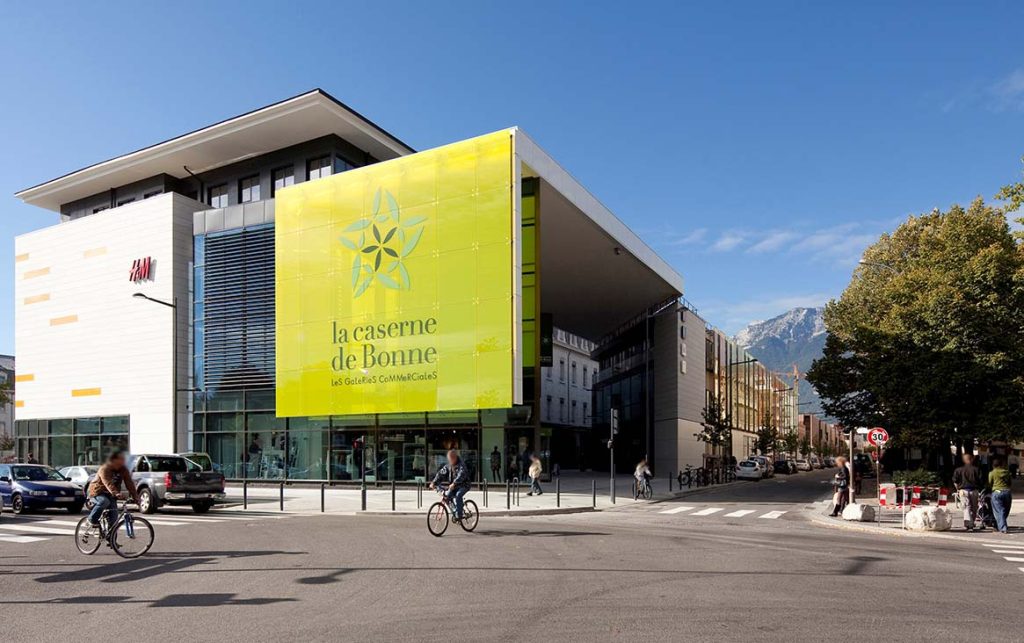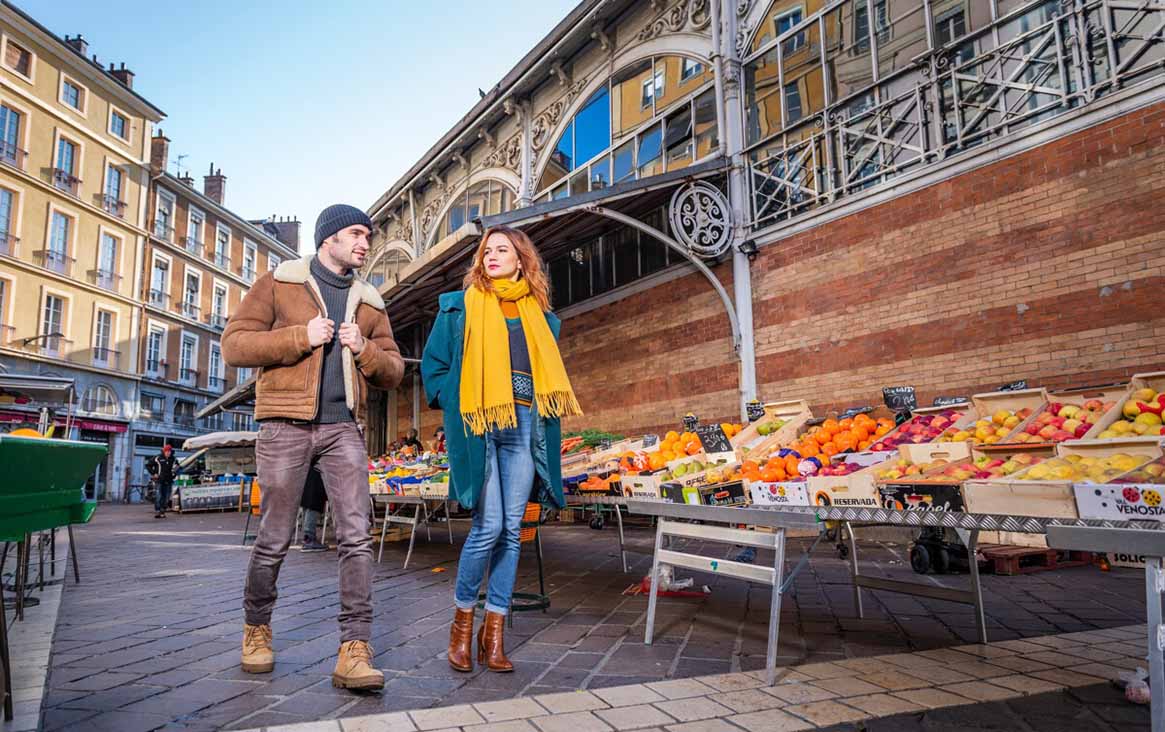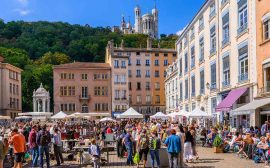1. Arrival in Grenoble and First Impressions
I arrived in Grenoble on a clear Autumn afternoon, with the crisp Alpine air cutting through the warmth of the sun. As the train pulled into the station, framed by mountains on all sides, I felt a sense of quiet energy. Grenoble isn’t loud or flashy. It doesn’t try to impress you on arrival. But within minutes of walking its streets, I could tell it was a city that rewards wandering. I had one mission in mind: to map out the best places to shop — but not just anywhere. I wanted the real experience. Markets. Local designers. Family-run shops. No chain stores or airport souvenirs. Just places where the spirit of Grenoble lived and breathed.
I checked into a small apartment near Place Victor Hugo, dropped my bag, and walked straight toward the old town — no map, no plan, just a curiosity-led stroll.
2. The Heartbeat of Grenoble: Marché de l’Estacade
My first real stop was Marché de l’Estacade. I had read that this open-air market, partially shaded under a rail viaduct, was where locals did their daily shopping. No tourists snapping selfies, just people buying their vegetables and chatting about the weather. The market stretches along Rue Nicolas Chorier, its long canopy of concrete arches adding a raw, urban frame to a space otherwise alive with color.
The smell of fresh strawberries hit me first — late-season ones, smaller than supermarket versions but so sweet I could smell them a meter away. I followed the scent until I found the source: a weathered stall run by a man in his sixties, who looked like he’d been selling berries here for decades. He handed me a piece to try, no pressure to buy. I bought two punnets immediately, along with some goat cheese wrapped in thick wax paper.

What made this place unique wasn’t just the produce — though that was excellent — but the rhythm of it all. A young mother negotiating the price of potatoes. A man who sold nothing but mushrooms, lined up like a scientist’s samples. An older woman with a basket of lavender bundles, talking to every customer as if they were old friends.
I spent over an hour there without even noticing. I didn’t need anything else, but I couldn’t stop browsing. That’s the pull of a market that’s more than a shopping space — it’s part of the city’s soul.
3. Vintage and Artisan Vibes in Quartier Championnet
Later in the afternoon, I wandered into Quartier Championnet. It’s known among locals as one of the most “Grenoblois” parts of town — a creative, slightly bohemian neighborhood full of street art, cafés, and small shops that seem to resist the flow of commercial sameness.
The first boutique I stepped into was called L’Atelier du 8. The place looked small from the outside, but inside it opened up into a labyrinth of handmade objects — jewelry, ceramics, hand-bound notebooks. There was a small studio space in the back, and I could hear someone shaping clay behind a curtain.
I asked the woman at the desk about a necklace that looked like it had been carved from volcanic rock. She explained it was made from recycled glass and painted with natural dyes, crafted by a local artist who only produced 10–15 pieces a month.
Down the street, I found Au Coin des Créateurs, a kind of curated concept store that rotated local designers and independent brands. Each item had a tag with a story — who made it, how it was made, and sometimes even a photo of the artisan. I bought a linen scarf dyed with walnut husks and oak bark. It smelled faintly earthy, and I wore it out of the store immediately.
Walking back through Championnet felt like moving through someone’s imagination. The graffiti on the walls didn’t feel like vandalism — more like a kind of public dialogue. People here seemed to care about beauty, not in a polished or commercial sense, but in a deeply personal way.
4. A Day at Halle Sainte-Claire: Covered Market Magic
The next morning I returned to the center and visited Halle Sainte-Claire, Grenoble’s historic covered market. Built in the 19th century, the hall itself is beautiful — big glass windows, wrought iron arches, and a vaulted ceiling that lets in morning light like a cathedral of commerce.
Inside, the vendors were setting up when I arrived. Baskets of eggs, wheels of cheese, cured meats, olive oils, herbal teas — I took a slow lap, trying not to rush. One stall caught my attention: a fromagerie specializing in Alpine cheeses. The cheesemonger let me try six kinds in five minutes, each with a story. There was a tomme rubbed with mountain herbs, a silky Saint-Marcellin, and an aged Beaufort with a complex, nutty aroma.
I bought a bit of each, along with a baguette from a nearby boulangerie and a jar of fig compote from a smiling woman who insisted I try it with blue cheese. I walked outside, found a bench by the Isère River, and had an impromptu picnic with the mountains watching over me.
5. Local Fashion at Caserne de Bonne

I’d heard about Caserne de Bonne, a former military barracks turned eco-friendly shopping area, and decided to check it out. It’s not your typical mall. The architecture is sleek but respectful of its historical bones, and there’s a noticeable emphasis on sustainability — green roofs, water recycling systems, energy-efficient lighting.
Inside, I found a few familiar French labels but was more intrigued by the independent boutiques tucked between them. La Gentle Factory sold ethically made clothing with minimalist cuts. Nearby, Sessùn had a dreamy selection of linen dresses and embroidered blouses. The prices weren’t cheap, but nothing here felt throwaway.
What stood out was how thoughtfully curated everything was — no blaring signs or rushed service, just careful attention to detail. I tried on a jacket that reminded me of something my grandfather might have worn — woolen, structured, timeless. I didn’t buy it, but I thought about it all day.
Outside, there was a small organic market set up in the courtyard. Children ran in circles around a fountain, parents drank coffee on the steps, and the whole place felt less like a shopping center and more like a communal space that happened to have really good things for sale.
6. Antiques and Oddities on Rue Bayard
One of the quieter but more rewarding streets I discovered was Rue Bayard, a narrow stretch near the Cathedral that hides a surprising number of antique shops. These weren’t overly polished galleries but treasure troves of the forgotten and the peculiar.
At La Brocante Grenobloise, I flipped through drawers of old postcards, many handwritten in looping cursive, postmarked from towns I’d never heard of. The owner, a bearded man in suspenders, told me he’d found a box of them at an estate sale in nearby Voiron. I bought three — not because they were valuable, but because they felt like stories waiting to be re-read.
Another shop had shelves stacked with vintage enamel signs, military pins, dusty books, and a strange collection of taxidermy birds. I was drawn to an old wooden frame containing a map of the Dauphiné region, faded and frayed at the corners. It now hangs on the wall above my desk at home.



